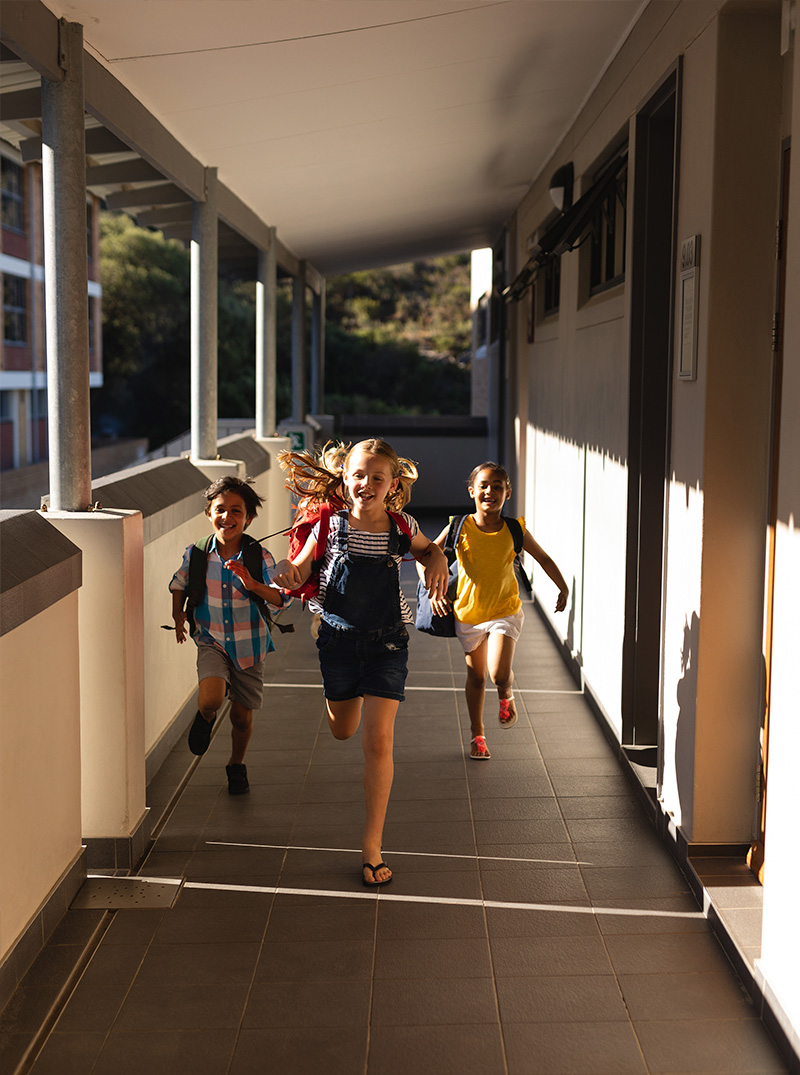In the modern educational landscape, ensuring the safety and security of students, staff, and visitors is of paramount importance. Schools and educational institutions serve as the nurturing grounds for future generations, and creating a secure, safe environment is crucial for fostering a conducive learning atmosphere. Crime Prevention Through Environmental Design (CPTED) emerges as a powerful strategy to achieve this goal. By strategically designing and managing the physical environment, educational institutions can significantly reduce opportunities for crime and enhance the overall safety of their campus.
Table of Contents
- The Principles of CPTED
- Natural Surveillance: Eyes on Every Corner
- Access Control and Territorial Reinforcement
- Environmental Maintenance and Management
- Lighting the Path to Safety
- Landscaping: Beauty and Security Combined
- Creating Secure Parking Areas
- Engaging the Community
- Integrating Technology for Enhanced Security
- Emergency Preparedness and Response
- Conclusion
- FAQs
The Principles of CPTED
CPTED operates on the fundamental principles of deterring criminal behavior through thoughtful design and environmental manipulation. Rather than relying solely on traditional security measures, CPTED recognizes that a well-designed environment can inherently discourage criminal activity. Let’s delve into the core strategies that schools and educational institutions can adopt.
Natural Surveillance: Eyes on Every Corner
Natural surveillance involves designing spaces in a way that maximizes visibility. By ensuring that areas are well-lit and unobstructed, potential wrongdoers are less likely to engage in illicit activities as they would be in plain view at the created “view corridors.” Think about it like this: just as a well-lit stage exposes every performer to the audience’s scrutiny, a well-lit campus’ plazas, streets, walks, and interconnecting public spaces leaves little room for criminal actions to go unnoticed by either cameras or other persons using the spaces.
Access Control and Territorial Reinforcement
Access control is like putting up a velvet rope on stanchions at an exclusive gala event – it limits entry to authorized individuals only. Schools can employ this strategy by creating clear boundaries and entry points, each with a designated level of scrutiny and security.
Territorial reinforcement goes hand in hand, making it evident to a capable guardian when someone is entering an area they shouldn’t. These measures not only delay or prevent unauthorized access but also give a strong message that the institution takes security seriously.
Environmental Maintenance and Management
Imagine a building with broken windows and overgrown bushes – it doesn’t exactly impart feelings of “safety.” Environmental maintenance is about keeping spaces well-maintained and free of clutter. A well-kept campus sends a message that the institution is vigilant about its surroundings, making it less attractive to potential wrongdoers to hide, loiter and vandalize the space.
Note: It is highly recommended that a CPTED analysis be performed to understand an existing facility’s vulnerabilities to address them and fight possible crime. If the school district is in the planning/design stages for a school, that is the optimal time to incorporate crime prevention design principles.
Lighting the Path to Safety
Just as a lighthouse guides ships through treacherous waters, proper lighting guides people from place to place in a safe manner. Adequate illumination along pathways, entrances, and parking areas ensures that every functional corner is well-lit and discourages those with malicious intent. After all, it’s hard to hide in plain sight.
Landscaping: Beauty and Security Combined
Landscaping isn’t just about aesthetics – it’s also about strategic landscaping that minimizes hiding spots. Dense shrubbery might seem like a cozy home for a squirrel, but it can also provide cover for those with ill intentions. By opting for open, well-manicured landscapes, educational institutions create an environment that’s both visually appealing and secure. There are many other characteristics of landscaping that can be used in CPTED. For example, a cacti garden, or a holly shrub hedge, can be pleasurable to observe, yet may be just the thing to prevent access to a vulnerable window in a building.
Creating Secure Parking Areas
Parking lots can sometimes feel like an afterthought, as a great number of them were arranged purely for functionality, but they can be ripe for criminal activity if not properly designed with CPTED principles. Secure parking areas employ measures like clear signage with directions for usage, designated spaces, accessible ADA spaces, passenger loading/unloading areas, and surveillance to deter potential offenders. When students, staff, and visitors know their vehicles are safe, they can focus on the tasks at hand.
Engaging the Community
Security in school spaces isn’t the sole responsibility of the institution – it’s a collective effort. Encouraging community engagement and participation, while fostering a sense of ownership over the campus space, can help create a network of vigilant eyes. When everyone feels invested in the safety of the environment, overall security improves.
Integrating Technology for Enhanced Security
Technology is a powerful ally in the battle for security. Integrating technology such as security cameras, access control systems, and alarms can greatly enhance campus safety. It’s like having a virtual security team that’s always on the lookout. There are some great digital solution integration providers in the market that greatly improve communication and security for a campus. Our assessment can make some valuable recommendations in this regard.
Emergency Preparedness and Response
No matter how robust the preventive measures are, there’s always a chance that emergencies can occur. Emergency preparedness and response plans, like those prepared for the community by guidelines like those of CERT, ensure that the institution and its capable guardians are equipped to handle crises effectively. The school campus will have a well-drilled and planned response to foreseen eventualities.
Conclusion
When it comes to securing educational institutions, a holistic approach is key. Crime Prevention Through Environmental Design (CPTED) offers a multi-faceted strategy that leverages design, psychology, and community involvement to create a safer, more secure campus environment. By implementing the principles of natural surveillance, access control, environmental maintenance, lighting, landscaping, and technology integration, schools can build an atmosphere where learning and growth can flourish without the shadow of fear.
FAQs
- How does CPTED differ from traditional security measures? – CPTED focuses on designing the environment to naturally discourage crime, whereas traditional measures rely heavily on reactive “fortressing” responses like alarms and patrols.
- Can CPTED be applied to existing campuses? – Absolutely. While it’s ideal to incorporate CPTED principles during the initial design phase, many strategies can be retroactively integrated to enhance the security of existing institutions.
- Are CPTED strategies expensive to implement? – Not necessarily. Many CPTED strategies involve simple modifications that can fit within various budgets, making them accessible for different types of institutions. Decision makers can participate in the ranking of what is most important to implement relative to the available budget each year.
- Is community involvement essential for CPTED to work? – Community involvement enhances the effectiveness of CPTED by creating a culture of vigilance. When everyone is invested in safety, the impact is more pervasive and profound.
- Can technology replace CPTED strategies? – Technology is a valuable tool, but it works best in conjunction with CPTED strategies. A holistic approach that combines both the tools and the strategies offers a more complete security coverage.
As we conclude this exploration of CPTED for schools and educational institutions, it’s clear that creating a secure campus is a collaborative endeavor that blends design, psychology, and community engagement. By adopting these strategies, educational institutions can craft environments where safety is not just a goal, but a value.





